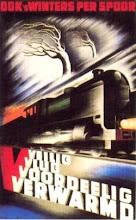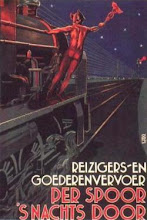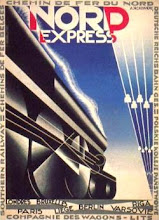Taking a Lionel train set back home to Europe from a holiday in North America is a nice idea, but getting it running requires a local power solution. All Lionel train sets have a 110 Volt AC, 60 Hz transformer, like the CW80. Nice but fairly useless in Europe, since we have 230 Volt AC, 50 Hz.

The most simple solution is buying a second-hand Märklin transformer, which are abundant on the mainland of Europe. For less than 10 Euro, you will be able to buy a cheap 10 VA transformer and for a bit more a 32 VA transformer. Just connect the red wire to the center rail and the brown wire to the outer rail and you are ready. This will allow you to run Lionel trains in Europe in a simple manner, without horns and bells and other control options. If you are handy, you can solder your own horn and bell control units, or you can find those control units on the American second hand market. In the picture below, the WA 251 horn button of Mountain Automation is shown as example of such a horn button that you can find on the market. In case your Lionel train is equipped with Trainsound, the sound might be garbled and you might want to switch it off. The Trainsound system does not operate correctly with the 50 Hz power we have in Europe.

Another solution is buying a so-called step-down transformer, which converts 230 VAC, 50 Hz in 110 VAC, 50 Hz. This will allow you to use the American transformers and control units, but since you do not have 60 Hz power the Trainsound engines will sound distorted.
The most radical solution is to generate 110 VAC, 60 Hz power at home yourself with a generator. This can be done, but is either noisy and expensive or relatively complicated. Some members of the LCCUK have become experts in generating their own 110 VAC, 60 Hz power.
With this power you use the Lionel transformers than with all their control options. Since about the turn of the century American toy trains have increasing numbers of play options; sounds, bells, horns, operating couplers, pantographs, etc. These options are best controlled with a digital command center. If you want to run and control your trains digitally, than generating your own 110 VAC 60 Hz is the best option, since you will have power with the right frequency.
I have chosen for another solution; the MTH Z750 transformer with a self-built 230 VAC to 20 VAC pre-transformer. The MTH Protosound system copes rather well with the 50 Hz we have in Europe, unlike the Lionel Trainsound system, which can not be controlled with 50 Hz power. With this power solution, I can operate MTH and Lionel trains. MTH protosound 1 and 2 trains run fine with it and the sound is also great. Lionel trains that are equipped with Trainsound can run too, but do not sound right, due to the frequency issue.



















